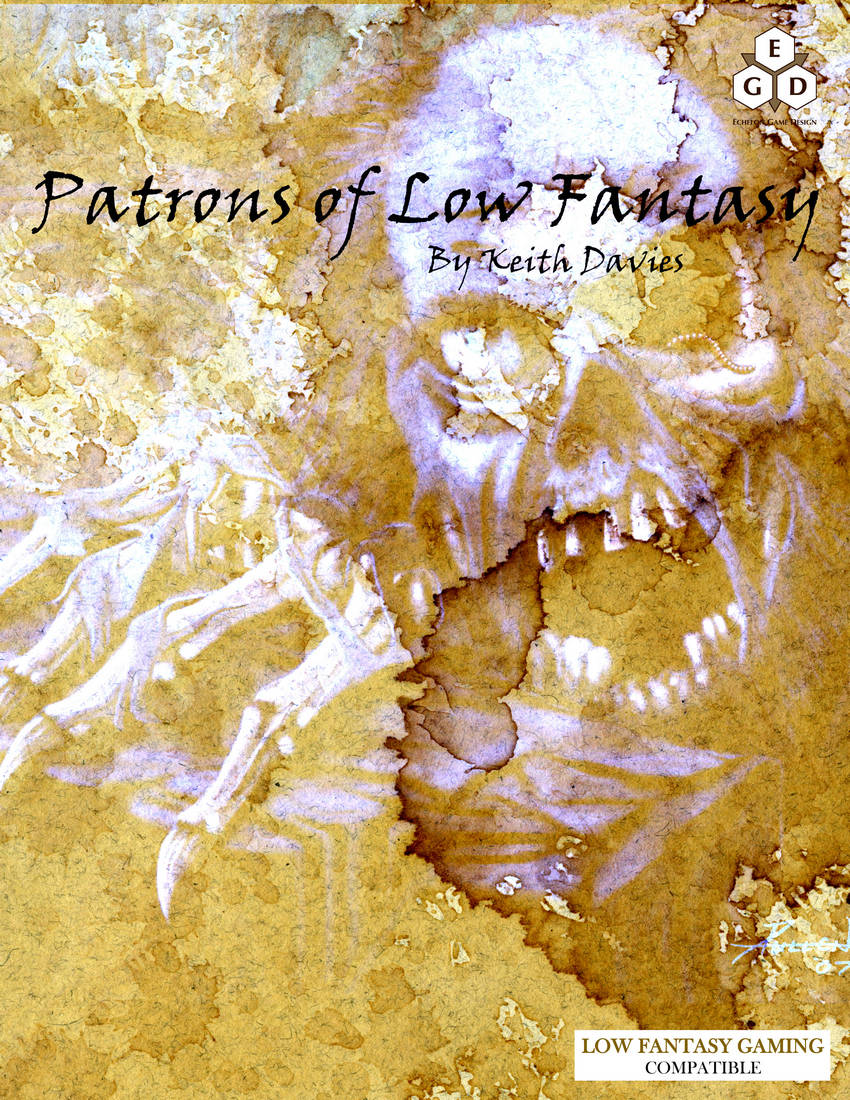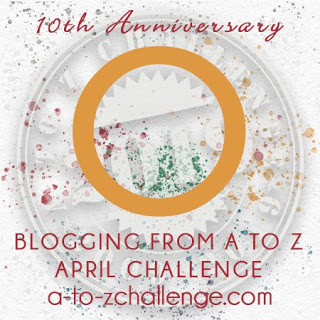I’ve been largely flying by the seat of my pants (and if you’ve seen the seat of my pants, you know that is indeed large). This works best for me while I’m getting a feel for how things come together, but I once I understand things better I’d really rather have a framework to build on and knowingly deviate from, rather than have inconsistency creep up on me.
Anatomy of a Patron
A patron has the following information.
- Name, the patron’s formal name.
- Epithet, an evocative name describing the patron.
- Summoning manifestation, what people perceive when the patron is summoned.
- Drives, three goals or objectives the patron is trying to achieve, each fitting one of six different templates.
- Favors, three abilities vassals can use if they have enough favor. A favor can be hazardous to use.
- Drawbacks, three generally negative things that apply to vassals. At least one of these should be a hint of the patron relationship.
I’m still working out how to present all of these. I’ve been working with just text on the blog, but I’m thinking of putting together stat blocks for the patron, and possibly the favors and drawbacks.
Generating Names and Epithets
I’ve been using tables from the Tome of Adventure Design, and they produce good results. I notice that I’ve gotten a fair number of collisions, but to be fair I generated 5,000 distinct (name, epithet) combinations. At some point I’ll want to revise this, but not right now.
Summoning Manifestation
I usually invent the manifestation last, after I know enough about the patron to know what I’m representing.
Drives
I have a simple six-entry table that I can match back to the patron’s epithets.
- Support person or group, work in the best interests (not necessarily in an appreciated way) of a specific person, nation or other group.
- Promote condition, bring about a particular condition such as war, renaissance, Golden Age, or the like.
- Promote ideal, increase the effect or presence of (a probably abstract) ideal such as good, evil, law, chaos.
- Oppose person or group, deny the desires of the target, or destroy the target altogether.
- Oppose condition, prevent the condition from coming about, or reduce it if it exists.
- Oppose ideal, diminish the effect or presence of an idea.
Until now I’ve been describing these in prose, but I think summarizing in the patron stat block would be appropriate. I can expand on it in prose, but formalizing and spelling it out will be helpful.
Favors
An earlier post describes types of favors, but I feel like it’s time to formalize things a bit more, outlining more precisely what abilities and benefits favors grant. I finally had the sense to look into the third edition Ravenloft rule book and found a really handy set of guidelines in the dark powers rules.
I think I’ll also check Pathfinder® Roleplaying Game: Horror Adventures™. I remember the corruptions look a lot like what I’m aiming for, but I think they might not be quite what I want.
The favors will be listed in the patron stat block.
Drawbacks
As with favors, another post describes drawbacks… and the Ravenloft rule book does a good job describing curses, which are then used as the downside of dark powers checks. I’m pretty sure I can mine this, and I can look into other curse rules from other games.
The drawbacks will be listed in the patron stat block.
Closing Comments
Okay, I now know a little better what I need to touch up the framework and patron designs. I also know what my next post is going to be.

